Kanchenjunga Base Camp Trek location and Route
Kanchenjunga Base Camp Trek is located in the far eastern region of Nepal, near the borders of Sikkim (India) and Tibet (China), within the Kanchenjunga Conservation Area of the Taplejung District. The trek takes you to the base of Mount Kanchenjunga (8,586 meters / 28,169 feet), the third-highest mountain in the world.
There are two base camps:
- North Base Camp (Pangpema) – Located in the Kanchenjunga Conservation Area, it offers spectacular views of the massive north face of Kanchenjunga.
- South Base Camp (Oktang) – Situated near the Yalung Glacier, it provides close-up views of Kanchenjunga’s southern face and the surrounding peaks.
The trek usually starts from Phungling Bazaar in Taplejung. This region is known for its remote wilderness, rich biodiversity, and traditional Limbu and Rai villages.
To reach Taplejung, you must first travel to Birtamod. From Birtamod, the road distance to Taplejung is approximately 215 km. You can reach Birtamod either by road or by taking a flight to Biratnagar, followed by a drive to Birtamod.
rom Taplejung, the trek begins toward the Kanchenjunga North and South Base Camps. The route to the North Base Camp (Pangpema) passes through Tapethok, Sekathum, Amjilosa, Gyabla, Ghunsa, and Khambachen. After reaching the North Base Camp, you return to Ghunsa and then head toward the South Base Camp (Oktang) via the Selela and Mirgin La passes.
The trail from Taplejung to the base camps takes you through charming local villages, farmland, lush rhododendron forests, alpine meadows, and remote landscapes, offering breathtaking views of the surrounding Himalayan peaks.
Best time for Kanchenjunga Trek
The best seasons to trek to Kanchenjunga are spring (March to May) and autumn (September to November). These periods offer the most favorable weather conditions, excellent visibility, and stunning natural beauty—ideal for photography and scenic enjoyment.
Among these, October and April are the most popular months:
October offers stable weather, cool temperatures, and clear skies. The trails are drier than during the monsoon, making trekking easier. However, it is also the busiest month, with more trekkers on the trail.
April provides mild temperatures and blooming flora, enhancing the landscape. Clear skies offer excellent views of Kanchenjunga and surrounding peaks. Days are comfortably warm, though nights can still be chilly at higher altitudes.
Due to the ideal conditions, these months are considered the peak trekking season in Nepal, and the trails can be busy.
Winter and monsoon (summer) seasons are not recommended for Kanchenjunga trekking:
Winter brings heavy snowfall, extreme cold, and avalanche risks, making trails difficult and dangerous.
Monsoon is marked by heavy rain, slippery trails, poor visibility, and the risk of landslides. Leeches and closed teahouses also complicate the experience.
If you are planning to trek to the Kanchenjunga North and South Base Camps, choosing the right season is crucial for a safe, enjoyable, and successful journey.
Kanchenjunga Trek Difficulty Level
The difficulty level of the trek is considered moderate to challenging due to its long duration and remote location. It involves a variety of terrain, including steep ascents and descents, rocky paths, and possibly some snow-covered sections, especially around Kanchenjunga North Base Camp, South Base Camp, and Sele La Pass. The trek usually takes around 18 to 19 days, with daily walking hours ranging from five to eight. Therefore, good physical fitness and strong determination are highly recommended.
To reduce the difficulty, it is advisable to hire a guide and porter, carry proper trekking gear, take adequate acclimatization days, walk at a slow and steady pace, eat a balanced diet, and stay well-hydrated. A guide usually has basic knowledge of high altitude sickness and can explain important information about nature and local culture, while a porter helps carry your belongings. This allows you to fully enjoy the trekking experience.
Cost for Kanchenjunga Trek
If you are only hiring a guide and porter, there will be additional costs for the Kanchenjunga Trek. Apart from the guide and porter fees, you will need to cover all other expenses yourself, including accommodation, meals, transportation, trekking permits, and any unforeseen costs.
However, if you purchase a full package, the cost becomes more economical as everything is bundled together. The standard itinerary for the Kanchenjunga Trek is 20 days, which includes two nights in a Kathmandu hotel and transportation to Biratnagar, then Taplejung, and back after the 18-day trek. The total cost is USD 1500 per person, based on a minimum of two participants.
This price includes two nights’ accommodation in Kathmandu, all necessary transportation as per the itinerary, trekking permits, guide and porter salaries (including their insurance), and three meals per day with one cup of tea or coffee per meal for each trekker.
Please note that the overall cost may be higher than the base price due to additional personal expenses such as extra food, beverages, hot showers, Wi-Fi, and other unforeseen costs. While a detailed breakdown may appear more expensive, the base price reflects a comprehensive package that combines all essential services.
Requires Permits and Permits cost for Kanchenjunga Trek
The Kanchenjunga Trek is located in a restricted area within the Kanchenjunga Conservation Area. Therefore, visiting this region requires a minimum of two foreign nationals and the hiring of a licensed guide to obtain the special Kanchenjunga trekking permits. Trekkers must go through a government-registered trekking agency with a licensed guide. The Kanchenjunga region is protected by the Kanchenjunga Conservation Area Project (KCAP), and all trekking activities are regulated by the Government of Nepal.
The permit costs for trekking in the Kanchenjunga region vary depending on the number of days and the time of year. The required permits are as follows:
Kanchenjunga Restricted Area Permit (KRAP):
This permit is mandatory for entering the restricted zones of the Kanchenjunga region.
Cost: USD 20 per person for the first three weeks, and an additional USD 10 per person for each extra day. This applies to all foreign nationals.
Kanchenjunga Conservation Area Permit (KCAP):
This permit is required for trekking within the Kanchenjunga Conservation Area.
Cost: NPR 1,000 per person for SAARC nationals and NPR 3,000 per person for all other foreign nationals.
Accommodation on the Kanchenjunga Trek
Accommodation on the Kanchenjunga Trek is provided by basic teahouses. Rooms are typically twin-sharing, and they include clean mattresses, bed covers, blankets, and pillows. However, bathrooms and toilets are shared with other trekkers.
During the busy trekking season, there may not be enough accommodation for large groups. Since the route is less traveled, there is usually enough space for around 50 people per day. The trek is gradually becoming more popular, and additional rooms and teahouses are being added along the Kanchenjunga trail each year. As a result, comfortable accommodation is generally available.
However, in places like Khambachen and around the Sele Le Pass near Kanchenjunga South Base Camp, teahouses are limited. During peak season, finding the best accommodation can be challenging, so advance booking is recommended, which your guide can help arrange.
There are no luxury lodges like those found on the Annapurna Circuit or Everest Base Camp treks. Teahouses usually offer hot showers for an extra fee. Charging electronic devices is also available for a fee, but it is advisable to carry a power bank and a small solar panel.
Food on the Kanchenjunga Trek
Food during the Kanchenjunga Trek is primarily provided by teahouses and a few small local restaurants along the trail. Every teahouse has a menu, and while the food options are similar at each location, the selection is limited. Trekkers can choose meals based on their preferences.
Teahouses are run by local families, and although the cooks have basic training, they can prepare all items on the menu. However, the taste may differ slightly from Western cuisine. Due to the remoteness of the Kanchenjunga region, fresh meat is difficult to find—especially at higher altitudes—so a vegetarian diet is advisable.
Many teahouses, especially at lower elevations, grow fresh vegetables in their own gardens and serve them to guests.
Recommended Food Options:
- Porridge: Oatmeal or other grain-based porridge
- Bread: Tibetan bread, chapati, or toast with jam, honey, or peanut butter
- Eggs: Boiled, scrambled, fried, or in an omelet
- Pancakes: Often served with honey, jam, or chocolate spread
- Tea/Coffee: Local tea, black tea, green tea, or instant coffee
- Dal Bhat: A traditional Nepali meal consisting of rice, lentil soup (dal), vegetable curry, and sometimes meat. Highly recommended for its balanced nutrition and high energy content
- Noodles: Fried noodles, noodle soup, or Thukpa (Tibetan noodle soup)
- Rice Dishes: Fried rice or rice with curry
- Momos: Nepali dumplings filled with vegetables or meat, served steamed or fried
- Pizza: Basic pizza, often with a thick crust and limited toppings
- Pasta: Simple pasta dishes like spaghetti or macaroni with sauce
- Soups: Various soups including garlic soup (recommended for altitude sickness), vegetable soup, and tomato soup
Acclimatization day to reduce the Altitude Sickness for Trek
Acclimatization is essential during the Kanchenjunga Trek because the route involves trekking to high-altitude areas, including the North and South Base Camps of Kanchenjunga and the Sele La Pass. The trek begins at low elevations and gradually ascends to over 5,000 meters, passing through several villages and high-altitude terrains.
As you climb higher, oxygen levels and air pressure decrease significantly compared to sea level. Once you reach altitudes above 3,500 meters, there is an increased risk of altitude sickness. Common symptoms include nausea, vomiting, diarrhea, headaches, loss of appetite, fatigue, dizziness, and difficulty sleeping.
To help prevent altitude-related issues, our standard Kanchenjunga Trek itinerary includes an acclimatization day in Ghunsa. This rest day allows your body to adjust gradually to the higher altitude, reducing the likelihood of developing altitude sickness.
If you experience any symptoms of altitude sickness during the trek, it is crucial to address them immediately. Ignoring symptoms can lead to more serious health problems and may prevent you from completing the trek.
To minimize the risk of altitude sickness, always follow your guide’s instructions. Experienced guides understand how to manage high-altitude conditions and will advise you to:
- Walk slowly and maintain a steady pace
- Stay hydrated by drinking plenty of water
- Eat a well-balanced diet rich in carbohydrates
- Avoid alcohol and sedatives
- Sleep at a lower altitude before ascending further if symptoms occur
This process, known as acclimatization, is key to adjusting safely to the thin air at high elevations.
By adhering to these guidelines, you can significantly reduce the risk of altitude sickness and enjoy a safer, more rewarding experience on the Kanchenjunga Trek. However, if your condition does not improve despite taking precautions, it is strongly advised to descend to a lower altitude immediately.
Travel Insurance for the Kanchenjunga Trek
Travel Insurance for the Kanchenjunga Trek is essential. Obtaining comprehensive travel insurance is crucial to ensure your safety and protection during your adventure in the Kanchenjunga region. Trekking in the Himalayas can range from easy to extremely challenging, and the rapidly changing Himalayan weather increases the risk of high-altitude sickness and other potential hazards.
In the event of an accident or medical emergency requiring treatment or evacuation, the cost of returning to a city and receiving care can be extremely high. Therefore, it is vital that your insurance policy covers air ambulance evacuation, medical expenses, and other travel-related risks, such as flight delays, lost or stolen luggage, and trip cancellations.
Your insurance must cover your entire stay in Nepal, especially treks that ascend above 5,500 meters. If it doesn’t, you may be personally responsible for all unforeseen expenses related to your trek.
Before purchasing a policy, carefully review the terms and conditions, paying close attention to:
- Coverage limits
- Exclusions (especially regarding altitude limits)
- The claims process
- Required documentation in the event of a claim
Choosing the right insurance policy ensures peace of mind and allows you to fully enjoy the incredible experience of the Kanchenjunga Trek with greater confidence and security.
Tipping information
The trekking guide and porter are essential to the success of your trip, ensuring it runs smoothly and without issues. Therefore, tipping is an important part of trekking in Nepal, as it shows appreciation for the hard work of the local staff who assist you throughout your journey.
It is customary to tip at the end of the trek. You should gather all team members—guide, porter, and assistant guide—together to distribute the tips. Tips are generally given in cash, preferably in US dollars or Nepalese rupees, and it’s best to use small denominations to make distribution easier.
As a general guideline, tipping around 10% to 15% of the total package cost is customary if you purchase a full package. If not, a tip of $10 to $15 per day per person is recommended. You can adjust this amount based on the quality of service provided.
These tips are highly encouraged to motivate the team and reward them for their outstanding service, contributing to a memorable and inspiring trekking experience.
Equipment & gear list for The Kanchenjunga Trek
Before departing from your home, it is necessary to pack your trip necessities. While it might be weighty to transport everything from your country to Nepal, some necessary equipment can be rented or purchased in Kathmandu's Thamel area.
For Kanchenjunga trekking in Nepal, basic but warm gear suitable for all seasons is necessary, although specific items may vary depending on the season and the length of the trekking days you choose.
It is highly recommended to choose lightweight and multi-functional gear and to minimize unnecessary items. This approach will help reduce the weight of your pack and make your trekking experience more comfortable.
Documents:
- Passport and 4 passport size photos
- Travel insurance details (in case an emergency evacuation if needed)
- Boarding passes for flights
- Driver’s license (if needed)
- Cash USD (minimum $500)
- Credit/Debit Card (Ensure you have $500 on your card incase an emergency helicopter evacuation is needed)
Sleeping:
- Sleeping bag (Comfort rating -20 Celsius recommended)
- Sleeping bag liner (Optional) - not necessary
Footwear:
- Trekking boots: one pair lightweight
- Sandals for city and tea house footwear
- Shoes for the plane and tea houses (Optional) - not necessary
- Gaiters for hiking in winter to the base camp
- Thin, lightweight inner socks
- Thick, warm wool hiking socks
Clothing for Body:
Please make sure that you have non-cotton clothing for trekking:
- Base-layer t-shirts (e.g. running t-shirts)
- Fleece/Windproof jacket
- Waterproof jacket
- Down jacket for warmth
- Base-layer trousers (optional)
- Waterproof trousers
- Trekking trousers
- Trekking shorts (Optional)
- Gloves, wool hat and sun hat
- Bandanna or scarf
Health Requirements (Basic First Aid Kit)
- First-aid kit; should contain lip salve, Aspirin, Band Aids, anti-histamine, Imodium or similar tablets for mild cases of diarrhea
- Re-hydration powder, extra prescription drugs you may be taking if any particular
- Wet wipes for cleaning can be purchased in Kathmandu
- Sanitizer, shampoo, Towel, wet wipes and washing soap
Others:
- Sunglasses and Sun cream
- Book (reading and writing materials) - not necessary
- MP-3 /Music, headphones and ear plug (who know some people on group are snoring) as optional.
- A day bag: 35 liters
- A duffel or rucksack with straps to go over your back (Max 12 kg of weight for porters to carry) - normally provide by trekking agency
- Dry Liner or Dry Bag- optional
- Water bottle/thermos/ camel bag: At least 2 L. Nalgen bottles best.
- Mobile and camera charger
- Power Bank
General Toiletries:
- Toilet papers/ tissue – you can buy in Nepal
- Contact lenses, Glasses (if needed)
- 1 medium sized quick drying towel
- Tooth brush/paste (preferably biodegradable)
- Nail clippers
- Face and body moisturizer
- Feminine hygiene products
- Small mirror - optional
- On Personal Hygiene
- Anti-bacterial hands wash
Others (optional):
- Trekking Poles
- Large plastic bags – for keeping items dry inside your kit / duffel bag
- Travel game i.e. chess, backgammon, and scrabble. (For luxuries)
- Binoculars (for luxuries)
- Trail Map/Guide book (if you are alone)


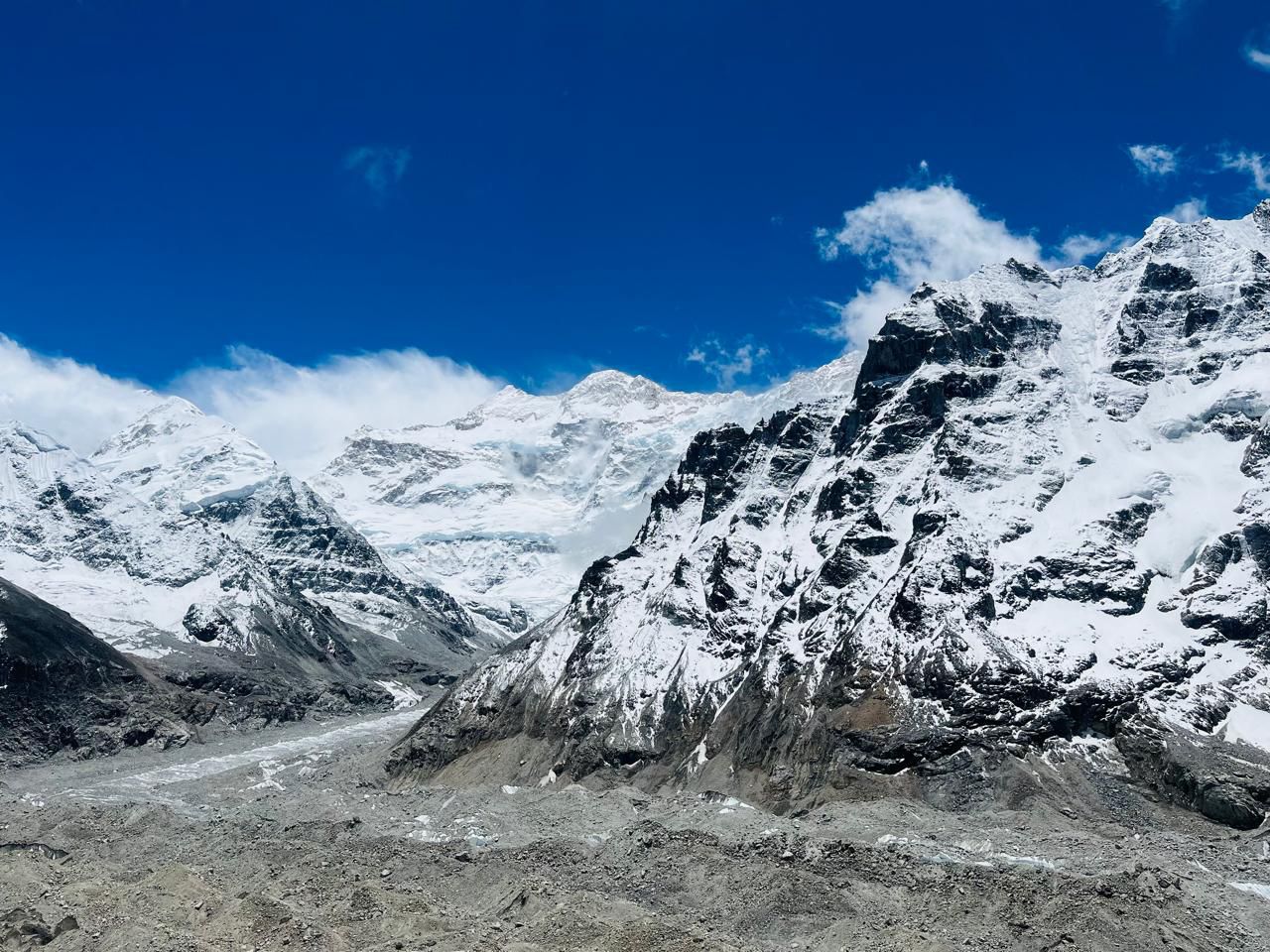
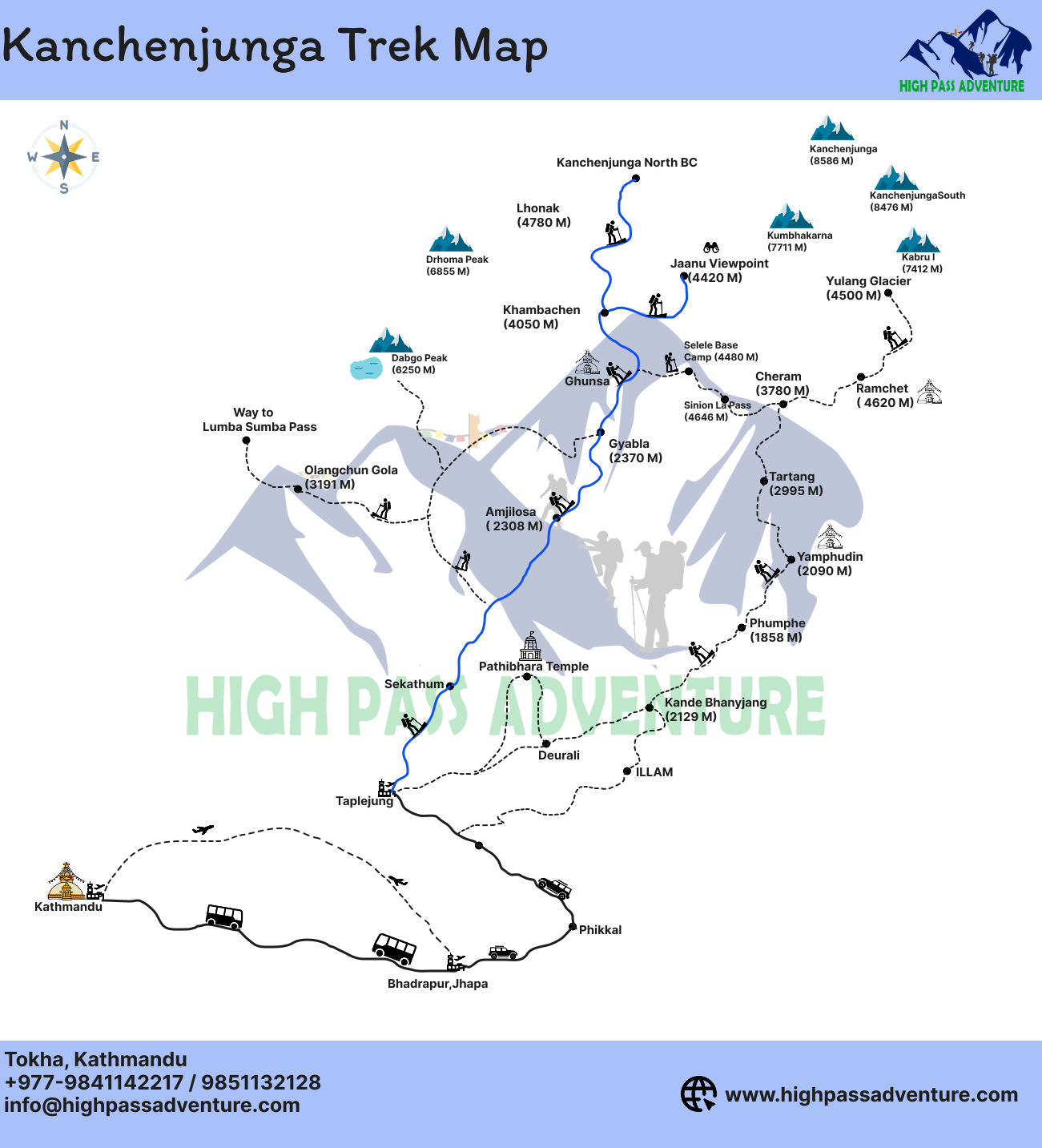


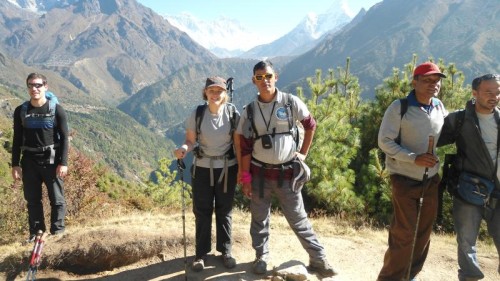

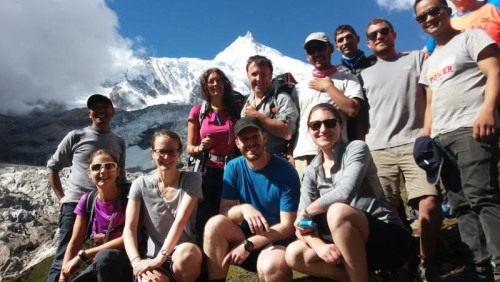



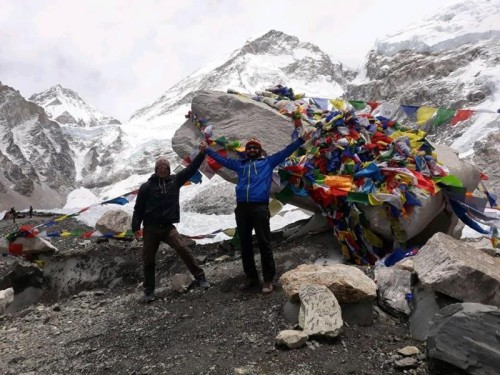
 USD 30
USD 30




Andrew
United States
Amazing Kanchenjunga North-South Base Camp Trek
6th June, 2025
We had an absolutely fantastic trek to Kanchenjunga and can’t recommend High Pass Adventure enough—especially our incredible guide, Bibek, and porter, Ganga! From the very beginning, Purna was warm, friendly, and extremely helpful in organizing everything. His communication and support made the planning process incredibly smooth. Once on the trail, our guide Bibek went above and beyond. He was not only knowledgeable and experienced but also genuinely fun to be around—always ready with a helping hand and a friendly chat.